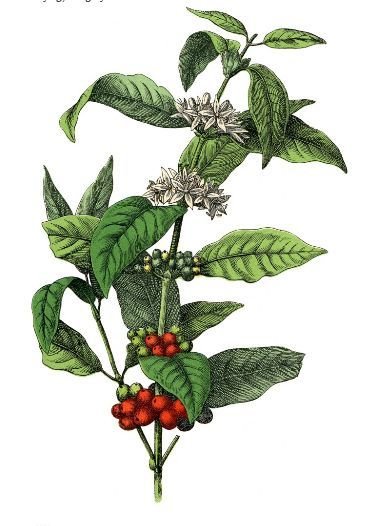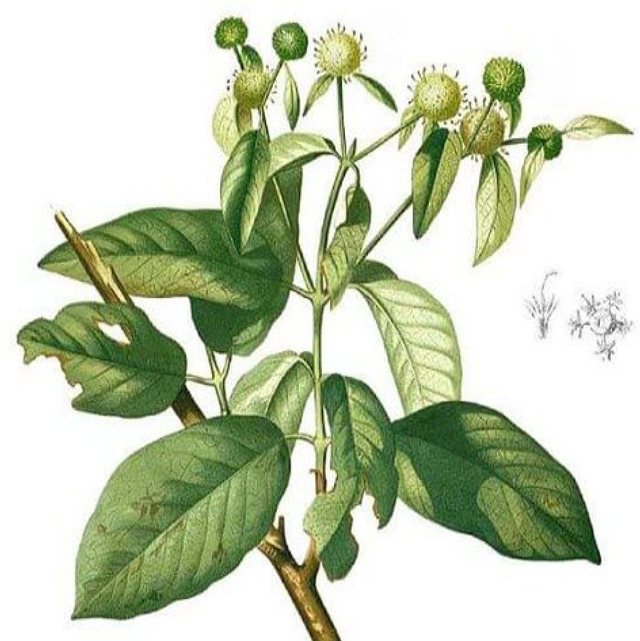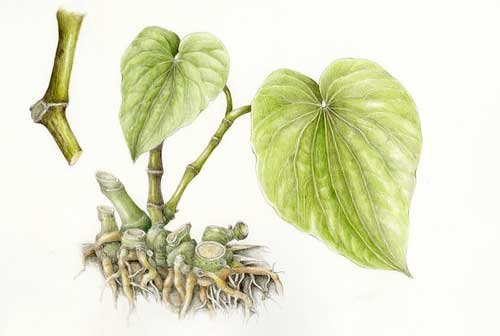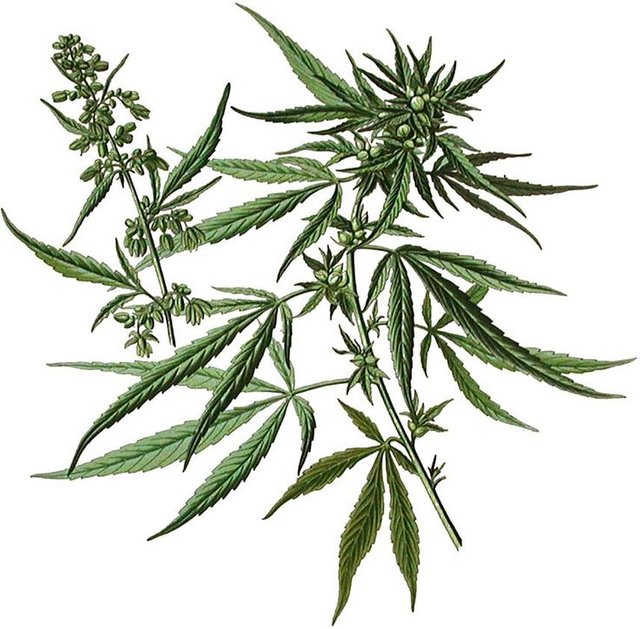Java, Kava, Kratom, and Cannabis: Botanical Alternatives to Synthetic Chemical Drugs
Over the years I have sought botanical alternatives to prescription drugs. I am a 60-year old male in excellent health and currently have no serious medical conditions requiring professional treatment.
For myself in particular, this paradigm shift is ironic given that I began my career with the ambition to become a medicinal chemist and work in the pharmaceutical industry to design, synthesize, and test new drugs.
Disclaimer
This post is not intended to provide medical advice, recommendations for others, or as a substitute for approved medical treatments; instead, it is an account of my personal experiences. I am not a physician and I have no clinical experience, but I do have degrees in chemistry, biology, and biomedical science. I am now retired from a 40-year career in biomedical, pharmacology, and toxicology research at prestigious institutions.
The limited information provided here is general and anecdotal, so interested readers should consult more detailed, reliable, and comprehensive literature or professional medical advice before consuming any botanical agent or nutritional supplement.
As with all medications and supplements there are side effects, adverse reactions, drug interactions, and potential for abuse and habituation. The reader will accept responsibility for gaining a deeper understanding and detailed information regarding dosage, effects, and risks associated with these herbs. Common sense dictates caution and moderation when considering any medication or supplement.
Medical History
My attitudes changed after two decades of unsuccessful attempts to treat depression, anxiety, and alcoholism concurrent with a doomed marriage and nasty divorce. Once I entered the revolving door of psychiatric and behavioral approaches to address my problems, I was over-medicated and hospitalized for seizures and confusion numerous times as my conditions worsened.
Eventually I was being treated simultaneously by psychiatrists, neurologists, and other specialists who communicated poorly and were reluctant to challenge each other's approaches. I was prescribed multiple antipsychotics, antidepressants, anticonvulsants, and other drugs, plus even more drugs just to combat side effects. My health was in rapid decline, and I became a vegetable although I was trained to make a living as a thinker.
Not even once did it occur to any doctor, nurse, or therapist that my worsening, new, and bizarre symptoms were caused by multiple drug interactions!
During a particularly stressful period including severe sleep deprivation I experienced a hypomanic episode for which I was hospitalized. One psychiatrist labeled me with the fad diagnosis of bipolar disorder. When that was disclosed to subsequent professionals, the diagnosis was accepted as gospel truth and no alternative diagnosis or treatment regimen was given serious consideration. Standard treatments for bipolar disorder weren't improving my condition. I asked myself, "If a wide range of treatments for a diagnosis aren't helping, then does it stand to reason that perhaps there has been a misdiagnosis?"
Generalized Anxiety Disorder (GAD) is a common trait in my family, and my depression always occurred in the winter months. I went to an old friend, now a family physician, who knew me and my family. He/she already knew of my family history of GAD and recognized that I was experiencing Seasonal Affective Disorder (SAD).
After gradual withdrawal from other medications, I was prescribed a common anxiolytic (diazepam p.r.n.) and a different antidepressant (bupropion). Lo and behold, my condition improved while my quality of life and professional career tangibly improved as well.
Now retired in sunny Florida, my situation is entirely different and I no longer require traditional prescription drugs and do not experience SAD. Over the years I researched botanical remedies and now find these plants and their active constituents efficacious and safe for maintaining wellness on my own terms.
I accept that my medical condition will change in the future and I will require professional medical intervention. Meanwhile, these botanicals address my pre-existing conditions while apparently promoting further health benefits in general.
Coffee

Coffee
Like many people worldwide, I enjoy my morning cup of coffee. Caffeine found in Coffea arabica and other plants is the world's most widely used psychoactive drug, delivering the stimulating effects of caffeine amidst social rituals so universally familiar that further explanations for its popularity are unnecessary here.
More importantly, the health benefits of phytochemicals, lignins, and tannins in coffee are well documented. Recent reports correlate coffee's broad spectrum of pharmacological properties with other neurotransmitters and hormones, including metabolism of steroids and endocannabinoids.
Kratom

Kratom
Mitragyna speciosa is a cousin of the coffee plant. It is also classified in the Rubiaceae family.
Instead of roasting the beans or fruits of this coffee-like plant, it has traditionally been used by chewing the leaves or drinking a tea made by boiling the leaves. The finely-powdered leaves are mixed with food, suspended in beverages or smoothies, or taken in capsule form.
Kratom contains a family of indole alkaloids structurally similar to yohimbine, the most prevalent of which is mitragynine.
Mitragynine
Kratom and its most prevalent alkaloids primarily act as opiod agonists and bind to the mu- and delta-opiod receptors. The pharmacological effects mimick the pain relieving and mood elevating effects of traditional opiates and opioids without the dangers of respiratory suppression. Among other beneficial properties, Kratom alkaloids display anti-diarrheal properties as do other opiates and opioids that bind to delta opioid receptors.
Low doses of Kratom (approximately 5 grams or two teaspoons) act as a stimulant and mood elevator with effects similar to strong coffee, espresso, or popular energy drinks but without the jitters characteristic of caffeine. Higher doses (approximately 10 grams or four teaspoons) have very effective analgesic effects comparable to hydrocodone, but without the dangerous respiratory depression responsible for fatal overdoses of typical opiates and opioids.
Mitragynine and related Kratom alkaloids have no structural resemblance to all or part the morphine molecule and inspection of its chemical structure would not predict opioid-like activity. Thus, mitragynine and analogs should be classified as "atypical opioids" due to their unique chemical and pharmacological properties.
The Botanical Education Alliance describes Kratom here:
What is kratom?Mitragyna speciosa (commonly known as kratom) is a tropical evergreen tree in the coffee family (Rubiaceae) native to Southeast Asia in the Indochina and Malaysia phytochoria (botanical regions). Mitragyna speciosa is indigenous to Thailand, Indonesia, Malaysia, Myanmar, and Papua New Guinea, where it has been used in traditional medicine since at least the 19th century.
There are two naturally occurring alkaloids under review. Mitragynine, which accounts for 66.2%, of the total alkaloid content from the young leaves of M. Speciosa, supports minor relief from aches and pains while acting as a stimulant similar to coffee in low doses. 7-hydroxymitragynine comprises roughly 2% of the total alkaloid content and is such a small amount that it’s measured in micrograms. This tea leaf supports energy and focus and gives minor relief from daily aches and pains. Kratom has helped individuals with its ability to:
• Support General Health and Vitality
• Promote Energy
• Support Joint and Muscle Comfort
• Support General Well-Being
• Support a Sense of Calm
Companies that have product names and product claims related to drugs must cease and desist immediately, as this plays directly into FDA's position on Kratom. The industry is only as good as its least ethical product. Otherwise, the FDA will focus in on those examples.
DOCTOR HENNINGFIELD SAYS "Kratom has a remarkable record of safety and low abuse risk for any substance used by millions of Americans."
Kratom and its alkaloids are somewhat habit forming. However the risk of addiction and severity of withdrawal symptoms are on par with coffee and caffeine, far from the medical crisis of habituation and withdrawal from typical opiates and synthetic opioids. Nicotine and alcohol withdrawal are far more severe than withdrawal from plants in the Rubiacaea family including coffee and Kratom.
Unfortunately seven states have banned Kratom while several other states have defeated similar legislation. Those that have passed legislation to ban Kratom erroneously classify it as a "synthetic cannabinoid," primarily because of false association with "K2, Spice," and similar products sold in head shops and convenience stores.
This creates an illusory correlation with other behavior having a bad reputation. In fact, Kratom has been used for centuries in its native habitat with little or no reason for concern.
In addition to having a negative impact on addiction to opioids and opiates, Kratom has been reported to curb cravings for other drugs, including alcohol and cocaine. In some countries such as Thailand, Kratom was outlawed because it posed a threat to the corrupt opium trade facilitated by those in power.
Kratom is a natural plant indigenous to Southeast Asia and Oceania. Obviously it is neither synthetic nor is it remotely chemically or pharmacologically similar to any natural or synthetic cannabinoids. Kratom has the potential to be a powerful and effective agent to combat the growing opioid abuse epidemic.
A recent post by @thoughts-in-time discusses the ongoing Kratom controversy.
Kava

Kava
Piper methysticum is closely related to a the common spice black pepper. The roots have traditionally been brewed and consumed as a tea by Pacific Islanders for centuries.
Kava is consumed in a ritual setting as a social and recreational beverage causing mild intoxication, and is an effective treatment for anxiety, stress, and insomnia. A family of about six kavalactones are primarily responsible for its pharmacological properties. An example of a kavalactone is methysticin, and others differ in their aromatic phenolic ether substituents and saturation of double bonds.
Methysticin
The social and ritualistic consumption of Kava is a popular activity not only in its indigenous Pacific Islands, but also at Kava and Kratom cafes in the mainland United States. It produces a pleasant numbness in the mouth and toungue, and has an earthy, tropical taste.
Cannabis

Cannabis
It is becoming widely accepted that Cannabis has numerous medical benefits. The topic of medical and recreational marijuana is so pervasive in modern culture that it is assumed the reader is familiar with the issues and can easily research the details independently elsewhere.
Over 100 cannabinoids from the Cannabis plant genus have been described and characterized. Tetrahydrocannabinol (THC) is responsible for the psychoactive properties, but most medically useful activity is associated with many other nonpsychactive cannabinoids such as cannabidiol (CBD). CBD from hemp is perfectly legal and is usually extracted along with most other cannabinoids, except THC, and is almost medically equivalent.
Cannabidiol
As with all drugs and medications, dosage makes the difference between "symptom relief" vs. "intoxication" or "high." In states that permit medical use of Cannabis, prescribers target doses that effectively treat the patient's condition while avoiding the side effect of intoxication.
A quote from Wikipedia lists the approved medical uses of Cannabis in the official USP, the government's official listing and standards for approved pharmaceuticals:
"Cannabis was entered into the United States Pharmacopeia in 1850, as a treatment for neuralgia, tetanus, typhus, cholera, rabies, dysentery, alcoholism, opiate addiction, anthrax, leprosy, incontinence, snakebite, gout, convulsive disorders, tonsillitis, insanity, excessive menstrual bleeding, and uterine bleeding.[10] It was widely available in pharmacies and even grocery stores during the latter half of the 19th century, priced affordably relative to other drugs with no requirement for a doctor's prescription.[10] Cannabis was commonly sold in tincture form by Parke-Davis, Eli Lilly, E. R. Squibb & Sons, and other drug manufacturers.[12]"
In a recent post I showed pictures from an official 1936 copy of the USP with listings for Cannabis and its extract and fluidextract (tincture) among the government's approved prescription drugs.
Summary
Botanical remedies can be an effective and safe alternative to synthetic prescription drugs. Patients can take charge of their own health care needs and promote wellness in the absence of a serious condition for which professional medical treatment is required.
Most medicinal herbs contain more than one single active compound, and often have a family of related substances with a range of biological effects. For this reason, medicinal herbs can be effective for a wide range of conditions. Furthermore, the "entourage effect" often attenuates side effects and increases the efficacy of botanical remedies.
By contrast, synthetic pharmaceuticals consist of a single discrete chemical compound (or a combination thereof) intended to have a specific biological interaction and therapeutic effect. Understandably this is preferred by medical professionals because a direct correlation and dose response can be identified and quantified, thus giving the physician scientifically sound evidence for treatment efficacy.
In many countries (e.g., China, India) herbal or botanical medicine is widely accepted. Prior to the mid-20th century herbal extracts, tinctures, and elixirs were a mainstay of western medicine. Active compounds were extracted, isolated, and purified from plant sources, and the majority of mainstream medications were originally identified from plant sources. More recently the structure-activity relationships were elucidated and the era of synthetic drugs was established.
Since naturally occurring compounds cannot be patented, big pharma lobbies against natural remedies and their influence on prescribing physicians begins in medical school and continues via traveling salesmen throughout their careers as a clinical practitioners. Unfortunately too many practicing physicians get their information about pharmaceuticals from the Physician's Desk Reference (PDR) which is basically a compilation of package inserts written by the pharmaceutical companies themselves.
Patients should educate themselves about potential botanical alternatives to synthetic prescription drugs, remembering that although the active compounds are natural and originate from plants, they are still drugs and some can be powerful or harmful. Furthermore the possibility of interactions with other drugs and foods is always a concern whether derived from a natural or synthetic source. Consult your physician and disclose any herbs or supplements for your own safety.
This is an amazing article! So many good points and useful for many! Keep it up! You don't seem to get all the votes worthy of such content and I wonder if you use steem engine? Here is link in case you don't: https://steemengine.net/join?r=2743
Cheers,
Darcy
Thanks for the support! I am relatively new (since February 2018) and most of my posts are about deep and detailed scientific topics. I understand why many people aren't upvoting or sharing such technical information, but there is a growing community of scientists using Steemit to communicate and publish results. I am retired from a career in research, and I have many unfinished projects and unpublished data that may be useful to practicing scientists and students. My "Unpublished Data" blog will allow me to share my experiences and ideas, and hopefully inspire fledgling scientists to carry on where I left off. I'll take your advice and use Steemengine. Please resteem if appropriate and hopefully some of my more mundane posts will reach an interested audience. Thanks!
Also, I probably have not chosen the best tags for some posts. I wish there was a better index for tags and keywords in addition to the "explore" link. Plus, I would like to have a way to bookmark or save posts for reference and reading later. I've been copying links and sending them to myself in texts.
Turns out I already had a steemengine account, followed, and showing my U/N. Why has it not yet done anything? What will it do, anyway? Do I need to click on something?
Great article!
Very informative post! Thank you for sharing that with me..🤘
Thanks in return!
Awesome article. We need more people to know the truth! Thank you brother.